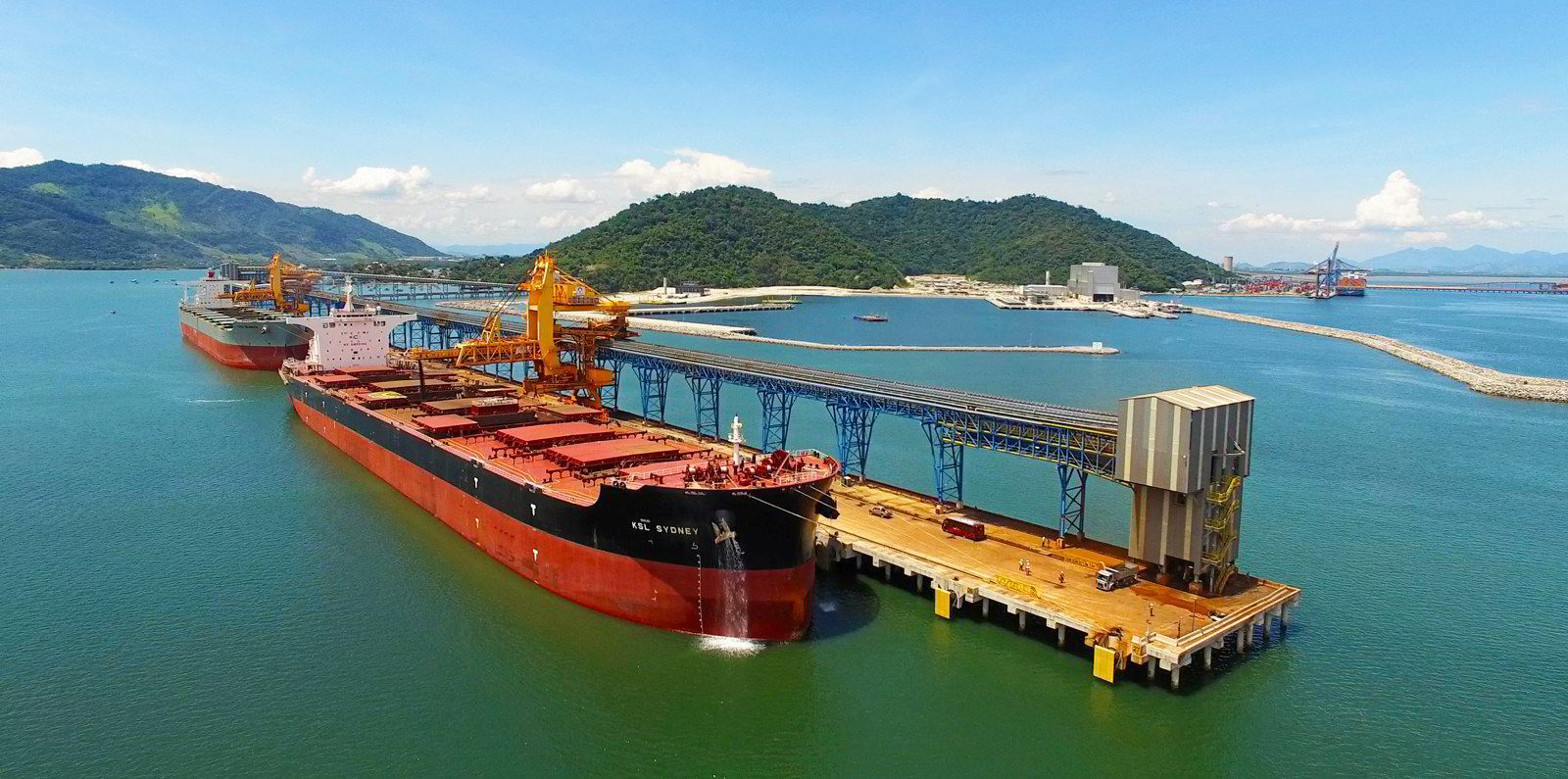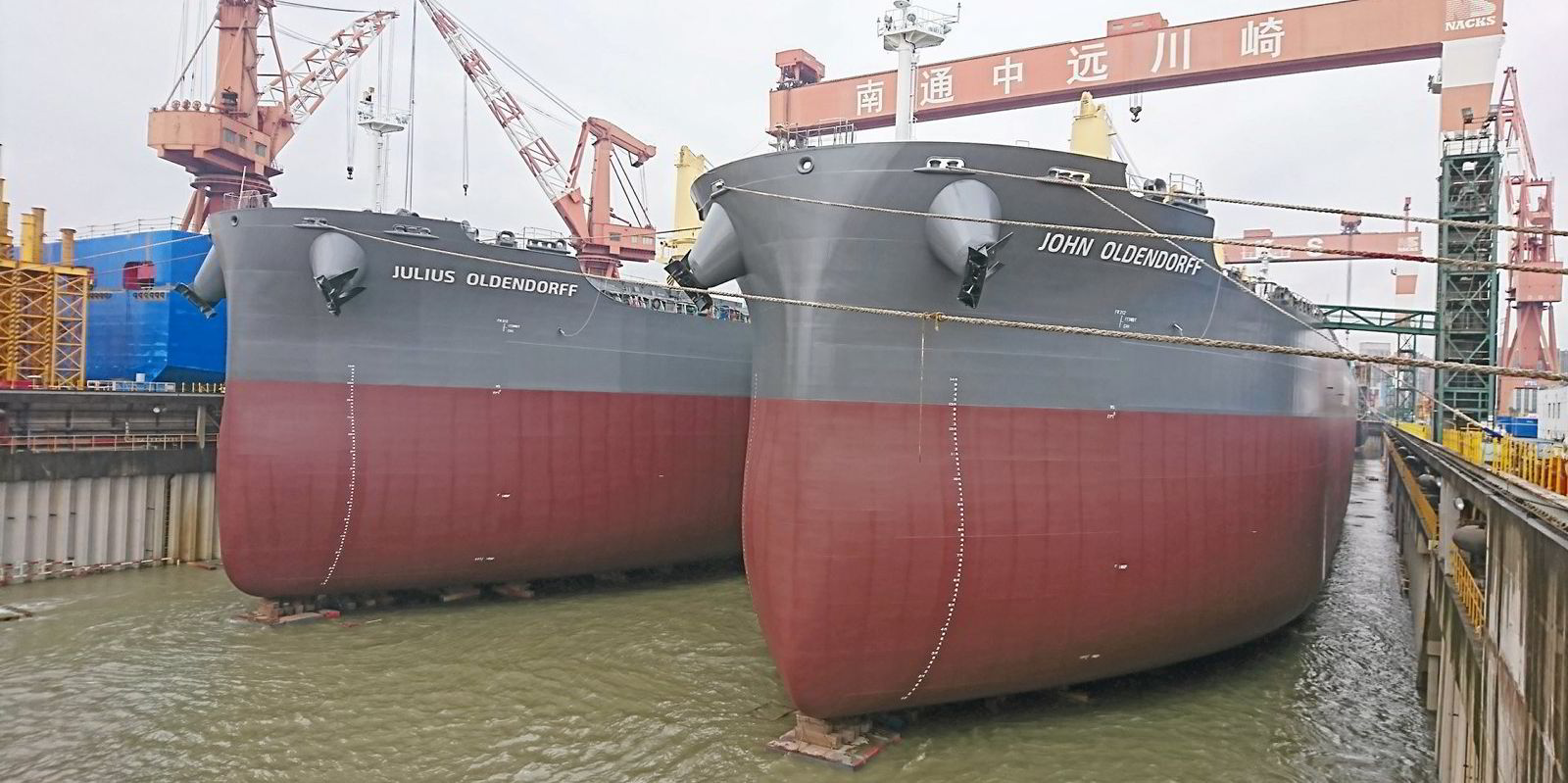The price of European Union Allowance (EUA) carbon credits will be included in freight assessments from 1 January for capesize bulkers on two benchmark voyages between South America and Europe.
The change follows a consultation of market participants by the Baltic Exchange this month, which considered changes in methodology for the voyage route from Tubarao in Brazil to Rotterdam (C2) and from Bolivar in Colombia to Rotterdam (C7).
The response from the market was clear — more than 90% of respondents agreed that the cost of carbon should be included in the voyage freight assessments for these two routes.
“Panellists are advised that when assessing dry voyage routes that call in Europe, they should include the cost of EUAs (carbon),” the Baltic said on Monday, feeding back the outcome of the consultation.
“When referencing fixtures where EUAs are known not to have been included, panellists should normalise the fixture, including the cost of EUAs, to aid their assessment.”
The Baltic said it will issue guidance to panellists on how to calculate the implied cost of EUAs through its EU Emissions Trading System calculator tool on its mini-site, emissions.balticexchange.com. This cost can then be added to panellists’ assessments when referencing a fixture that excludes the cost of carbon.
Before the consultation process began in early November, there was already a certain expectation in the market that carbon allowances would be included in the C2 and C7 voyage assessments.
Cargo owners including German steel mills have been asking for two prices for freight, including and excluding carbon, and coal traders have told the Baltic they are pricing carbon into the freight for 2024 contracts.
The market is also coming to a consensus on who will be responsible for buying EUAs to cover emissions from voyages within European waters.
“Charterers and cargo owners are coming to the opinion that for the spot market, the shipowner should [be] responsible for acquiring the EUAs and that the cost included in the freight, as a voyage cost, in the same way that fuel is included,” the Baltic said in its consultation document.
“With a lack of alternative fuels, there is a direct relationship between the total voyage cost of fuel and carbon.”
Futures
One area of the market on which any change in the freight assessment methodology would have a direct impact is freight derivatives, but there has been little reaction from the futures market.
The Baltic said it received direct feedback from a company holding interest in 2024 for C7 voyages, which agreed that the cost of carbon should be included in the freight.
The European Energy Exchange and the Singapore Exchange (SGX), which clear freight derivatives, circulated the consultation to their customers — but received no responses.
The SGX currently offers C7 futures and swaps, which use the Baltic’s spot and forward-dated assessments to settle and mark the contracts.
Freight derivatives for the C7 route are thinly traded, particularly over the past two years.
The EU Emissions Trading System is expected to have a far greater impact on shipowners than other emissions-reduction regulations such as the Carbon Intensity Indicator.
The scheme will cover 100% of in-scope 2026 emissions by 2027.
Ships within the ETS catchment area — European waters — must pay for their right to pollute by buying an EU Allowance (EUA). Each allowance maps to one tonne of CO2 emitted.
Under the scheme, “the polluter pays”. In other words, the party that buys the fuel is responsible for purchasing EUAs.
The shipping company named on a vessel’s document of compliance is responsible for administering compliance, even though its commercial operator is ultimately on the hook for paying the cost of emissions allowances.
The ETS applies to CO2 emissions from all ships over 5,000 gt in 2024 reported under the EU’s monitoring, reporting & verification (MRV) system. The minimum vessel size will drop to 400 gt in January 2025.
Those vessels will need to buy EUAs to cover all emissions for voyages between and while at berth at EU, Norwegian and Icelandic (EEA) ports.
They will also need allowances for half of their greenhouse gas emissions on voyages that either begin or end at EEA ports.
In 2025, 40% of the CO2 emissions from voyages and berth stays during 2024 will be subject to the ETS, ramping up to 100% in 2027.
The MRV in 2026 will also require the reporting of methane and nitrous oxide emissions from ships, with EUAs to be paid on 100% of the CO2 equivalent of those emissions, in addition to CO2, within the EU ETS from 2027.
The inclusion of methane emissions will affect vessels that use LNG as a fuel, whereas the levying of charges for nitrous oxide will influence future tonnage that runs on ammonia.




